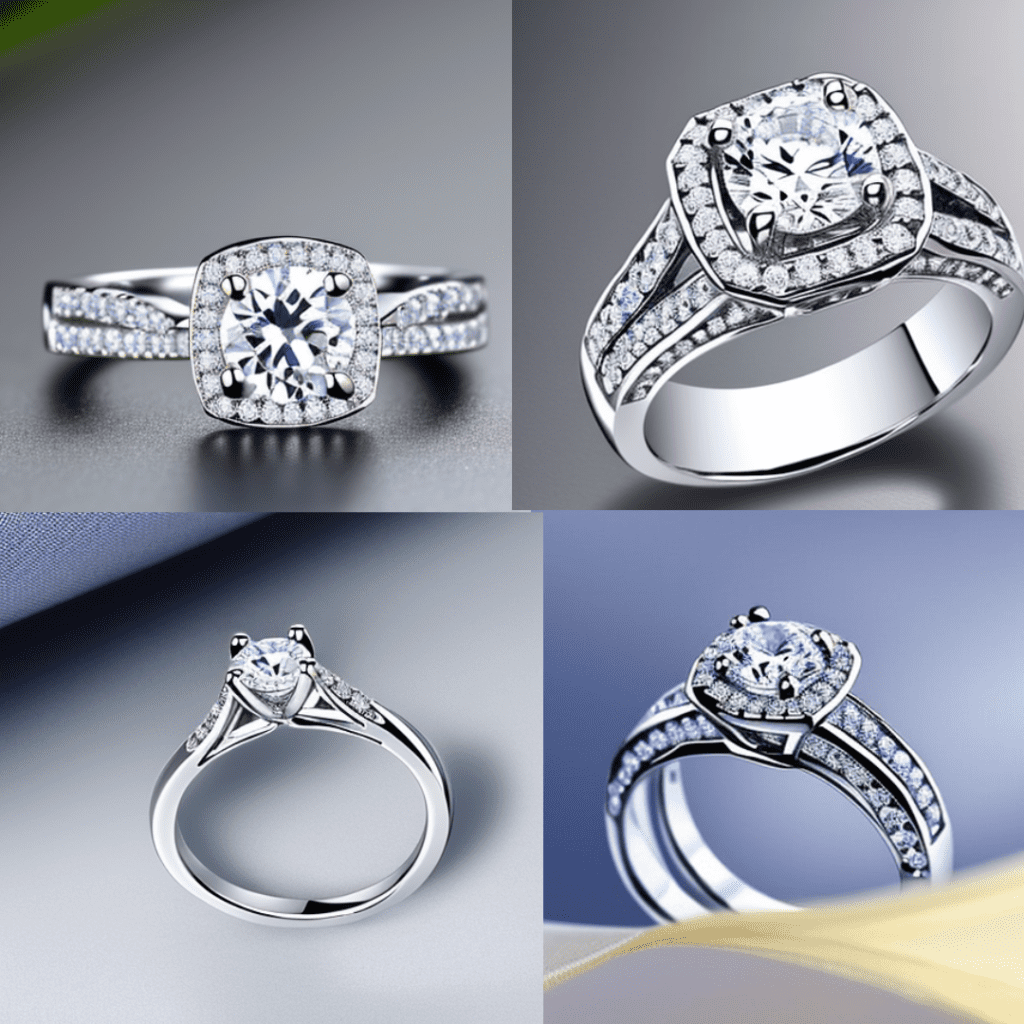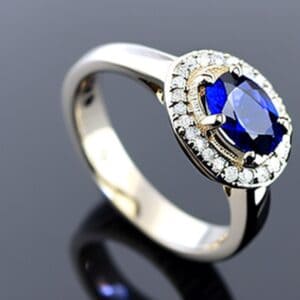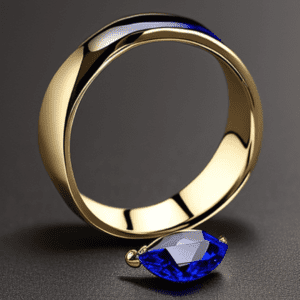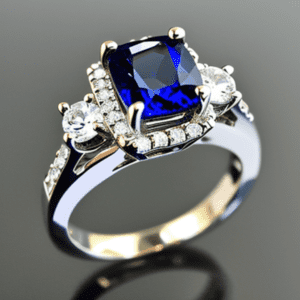
Diamonds are a symbol of love, commitment, and timelessness, which makes them a popular choice for wedding and engagement rings. However, with so many different types of diamonds available on the market, and it can be overwhelming to choose the right one.
In this article, we’ll take a closer look at the different types of diamonds for engagement rings, including natural diamonds, lab-grown diamonds, and diamond simulants, and help you make an informed decision when purchasing a diamond ring.
Table of Contents
Natural Diamonds
Natural diamonds are diamonds that are formed naturally over millions of years in the Earth’s mantle and brought to the surface through volcanic eruptions. They are the most traditional and well-known type of diamond and are highly prized for their unique beauty and rarity.
Advantages of Natural Diamonds:
- Higher value due to their rarity and natural beauty
- One-of-a-kind patterns and inclusions that make each diamond unique
- Eco-friendly as they don’t require any additional resources to create
Disadvantages of Natural Diamonds:
- More expensive than lab-grown diamonds or diamond simulants
- Potential ethical concerns regarding the diamond mining process
- Some natural diamonds may have flaws or inclusions that can affect their appearance
Examples of Natural Diamond Rings:
- Round Cut Natural Diamond Engagement Ring
- Princess Cut Natural Diamond Wedding Band
- Oval Cut Natural Diamond Anniversary Ring
Lab-grown Diamonds
Lab-grown diamonds are diamonds that are created using advanced technological processes in a controlled laboratory environment. They are chemically, physically, and optically identical to naturally mined diamonds, but are produced in a fraction of the time and cost. They come in various colors, sizes, and shapes, and are available at a much lower cost compared to mined diamonds.
There are two primary methods used to create lab-grown diamonds: High Pressure High Temperature (HPHT) and Chemical Vapor Deposition (CVD).
1. High Pressure High Temperature (HPHT) method:
In this method, a small diamond seed is placed in a metal chamber and subjected to high pressure and high temperature. The carbon atoms in the seed rearrange and bond together to form a diamond crystal. This process can take several weeks to several months, depending on the size of the diamond.
2. Chemical Vapor Deposition (CVD) method:
In this method, a mixture of gases is heated to create a plasma. The carbon atoms in the plasma settle on a substrate, where they bond together to form a diamond crystal. This process can take several weeks to several months, depending on the size of the diamond.
Advantages of Lab-grown Diamonds
- More Affordable: Lab-grown diamonds are available at a much lower cost compared to mined diamonds, making them a more affordable option for consumers.
- Eco-Friendly: The process of creating lab-grown diamonds is much more environmentally friendly compared to traditional diamond mining, which can cause harm to the environment and local communities.
- Consistent Quality: Lab-grown diamonds are created in a controlled laboratory environment, which allows for a more consistent quality compared to mined diamonds.
- Customizable: Lab-grown diamonds can be grown in various colors, sizes, and shapes, making them a more customizable option for consumers.
Disadvantages of Lab-grown Diamonds
- Lower Resale Value: Lab-grown diamonds typically have lower resale value compared to mined diamonds, as they are not as well-regarded by the jewelry industry.
- Limited Availability: Lab-grown diamonds are still a relatively new technology, and their availability is limited compared to mined diamonds. It may be more difficult to find specific cuts, shapes, or sizes in lab-grown diamonds compared to mined diamonds.
- Perception: Some people still view lab-grown diamonds as inferior to mined diamonds, and may not see them as having the same level of prestige or value.
Examples of Lab-grown Diamond Rings
There are many different styles and designs available when it comes to lab-grown diamond jewelry. Some popular options include:
- Solitaire Lab-grown Engagement Rings
- Halo Lab-grown Diamond Engagement Ring
- Three-stone Ring Lab-grown Engagement Bands
- Vintage Lab-grown Diamonds Ring
Diamond Simulants
Diamond simulants are made of artificial materials that resemble the look of a diamond, but are not diamonds themselves. They are often made of materials such as cubic zirconia, moissanite, or white sapphire and are used as a more affordable option for people who want the look of a diamond, but cannot afford the real thing. This is the reason why they are even often referred to as imitations, fake diamonds, or diamond look-alikes. Even as the diamond simulants are used as a cheaper alternative to a diamond, they have different properties and characteristics that set them apart from a real diamond.
Advantages of Diamond Simulants
There are several advantages to using diamond simulants as opposed to real diamonds. Some of the benefits include:
- Cost-Effective: Diamond simulants are significantly less expensive than diamonds and lab-grown ones, making them a more affordable option for many people.
- Eco-Friendly: Diamond simulants do not require mining, which is a process that can have negative environmental impacts.
- Durability: Some diamond simulants are more durable than diamonds and are less likely to crack or scratch.
Disadvantages of Diamond Simulants
- Appearance: Diamond simulants may not look exactly like diamonds, and some people may be able to tell the difference.
- Resale Value: Diamond simulants do not have the same resale value as diamonds and may not retain their value over time.
- Quality: Diamond simulants are often lower in quality than diamonds and may not have the same brilliance or fire.
Examples of Diamond Simulant Rings
Some popular examples of diamond simulant rings include:
- Cubic Zirconia Engagement Rings
- Moissanite Solitaire Engagement Bands
- White Sapphire Halo Engagement Rings
- Glass Gemstone Bridal Rings
- Cubic Carbon Wedding Bands
Comparison of Natural Diamonds, Lab-grown Diamonds, and Diamond Simulants
Comparison of Cost
When it comes to cost, natural diamonds are typically the most expensive option. The price of a natural diamond is determined by its carat weight, cut, clarity, and color. Lab-grown diamonds are typically less expensive than natural diamonds, with prices starting at 30-40% less. Diamond simulants, such as cubic zirconia, are the most affordable option, with prices starting at a fraction of the cost of a natural or lab-grown diamond.
| Type of Diamond | Average Cost |
| Natural Diamond | $1,000 – $10,000 |
| Lab-grown Diamond | $600 – $8,000 |
| Diamond Simulant | $20 – $200 |
Comparison of Quality
In terms of quality, natural diamonds and lab-grown diamonds are virtually identical. Both types of diamonds are made of the same material, carbon, and have the same physical and optical properties. The main difference is the way they are formed, with natural diamonds formed over millions of years under intense heat and pressure, and lab-grown diamonds formed in a matter of weeks in a laboratory.
Diamond simulants, on the other hand, are not made of the same material as diamonds and do not have the same physical and optical properties. While diamond simulants can look similar to diamonds, they lack the durability and brilliance of real diamonds.
Comparison of Durability
When it comes to durability, diamonds are the strongest and most durable gemstones. Both natural diamonds and lab-grown diamonds have a hardness rating of 10 on the Mohs scale, making them highly resistant to scratches, chips, and cracks.
Diamond simulants, such as cubic zirconia, have a much lower hardness rating of 8-8.5 on the Mohs scale and are more prone to scratches, chips, and cracks.
Comparison of Environmental Impact
The production of natural diamonds can have a significant impact on the environment, with some diamond mines causing damage to local ecosystems, water sources, and wildlife habitats. Additionally, the process of mining diamonds requires large amounts of energy and resources.
Lab-grown diamonds, on the other hand, are produced in a controlled laboratory environment and do not have the same environmental impact as natural diamond mining. However, the energy consumption and carbon footprint of producing lab-grown diamonds can still be substantial, especially when considering the energy-intensive process of growing diamonds in a controlled environment.
Diamond simulants, such as cubic zirconia, are often produced in large quantities and do not require the same energy-intensive processes as natural diamonds or lab-grown diamonds. This makes them a more environmentally friendly option, especially for consumers who are concerned about the impact of their jewelry purchases on the environment.
Factors to Consider When Choosing a Diamond for an Engagement Bands

Choosing a diamond for a engagement ring can be a daunting task, especially if you are not familiar with the industry. Each type has its own unique advantages and disadvantages. When choosing the right type of diamond for your needs, consider factors such as cost, quality, durability, and environmental impact. Regardless of which type of diamond you choose, it’s important to always purchase from a reputable jeweler and to educate yourself on the characteristics and properties of each type of diamond. However, with the right information, you can make an informed decision that you will be happy with for years to come.
Here are some important factors to consider when choosing a diamond for a proposal ring:
Personal Preferences
When it comes to choosing the diamond, the most important factor to consider is your personal preferences. What color, shape, size, and cut do you prefer? Do you prefer a diamond with a high level of clarity, or are you more focused on size and carat weight? These are all important questions to ask yourself before making a purchase.
Cost
Another factor to consider is cost. Diamonds can range in price from a few hundred dollars to several thousand dollars, depending on their size, quality, and rarity. It is important to set a budget for your diamond purchase and stick to it, so you do not overspend or compromise on quality.
Quality
When choosing a diamond, it is important to consider its quality. The four C’s – cut, color, clarity, and carat weight – are used to evaluate the quality of a diamond. A well-cut diamond will have more brilliance and fire, while a diamond with a high level of clarity will have fewer inclusions and blemishes. It is important to choose a diamond with a quality that meets your personal preferences and budget.
Durability
Diamonds are one of the toughest substances on earth, but that does not mean that all diamonds are created equal. Some diamonds are more durable than others, and it is important to choose a diamond that will stand the test of time. Consider the setting of the ring and the way the diamond is cut, as these can also impact the durability of the diamond over time.
Environmental Impact
Finally, consider the environmental impact of your diamond purchase. Diamonds are a finite resource, and their extraction can have a negative impact on the environment and local communities. Look for diamonds that are ethically sourced, and choose a retailer who can provide documentation to support their claims.
Final Thoughts
Choosing the right diamond for a proposal ring ultimately comes down to personal preference and budget. Natural diamonds are the traditional choice and have a long history of value and prestige. Lab-grown diamonds offer a more affordable option while still having the same chemical, physical, and optical properties as natural diamonds. Diamond simulants are an affordable option for those on a tight budget, but they have the least value and durability.
Recommendations for Choosing a Diamond for an Engagement Jewelry
| Option | Benefits | Drawbacks |
|---|---|---|
| Natural Diamonds | – Most valuable – Traditional choice – High durability | – Most expensive – Limited availability – Environmental impact |
| Lab-grown Diamonds | – Affordable compared to natural diamonds – Chemical, physical and optical properties are the same as natural diamonds – More sustainable option | – May still have limited availability – May not hold the same prestige as natural diamonds |
| Diamond Simulants | – Most affordable option – Wide availability | – Least durable – Least valuable – Not a true diamond |
When choosing what kind of diamond to select for your engagement ring, consider your budget and what is most important to you. Whether you choose a natural diamond, lab-grown diamond, or diamond simulant, your ring will symbolize your love and commitment for years to come. Ultimately, the right diamond is the one that brings you the most joy and fits your unique style and needs.



